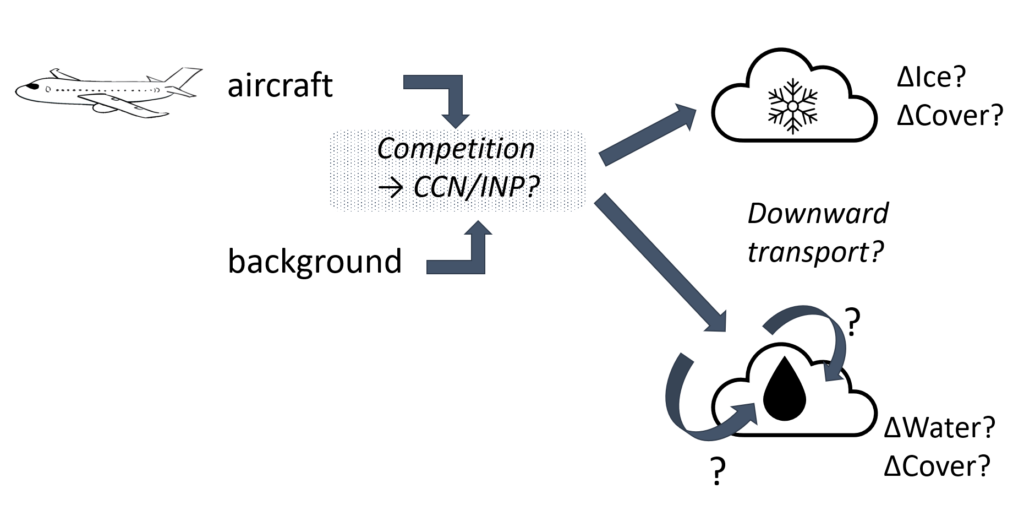The third scientific axis studies the mechanisms by which aerosol emissions from aviation modify the formation and evolution of liquid and ice clouds to quantify the resulting radiative forcing. Some of the aerosols emitted or formed by aircraft engine emissions act as ice nuclei, modifying the formation and evolution of ‘natural’ ice clouds. These effects are distinct from the formation of “artificial” induced contrails and cirrus clouds, which are studied in Axis 1. Aviation aerosols can also be transported to the lower atmosphere, where they act as condensation nuclei of liquid clouds, modifying the formation and evolution of these clouds. The impact of aviation aerosols on clouds is so poorly known that it has so far been impossible to give a best estimate and range of uncertainty on a global scale.
The first objective is to predict the competition between aerosols emitted by aviation and pre-existing aerosols in the atmosphere in terms of their contribution to the populations of condensation and ice nuclei.
The second objective is to quantify the time scales that govern the horizontal and vertical transport of aerosols from aviation
The third objective is to model the response of liquid, ice, and mixed clouds to a perturbation in their droplet and/or crystal numbers.

